Trees
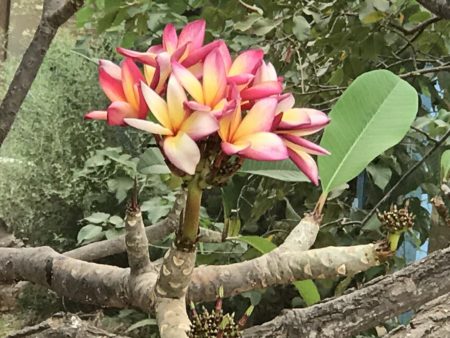
The twenty agriculture volunteers stayed at the Peace Corps transit house in Kombo at the beginning of IST (in-service training) while we attended bee school, then we traveled to Massembeh for the rest of our classes. The 3 weeks of IST were focused on developing techniques to be successful working with our counterparts and communities during our time in service.
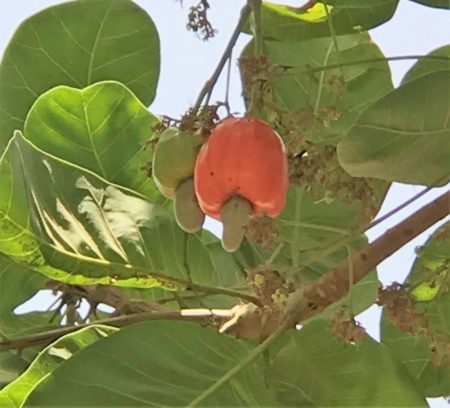
The Gambia is the fourth most densely populated African country, and since independence in 1965 the population has increase five times, and deforestation is a severe problem. At the beginning of IST we learned about the importance of trees for: erosion control, wind breaks and shade, woodlots, live fencing, which trees add nitrogen into the soil, or produce food for animals and people.
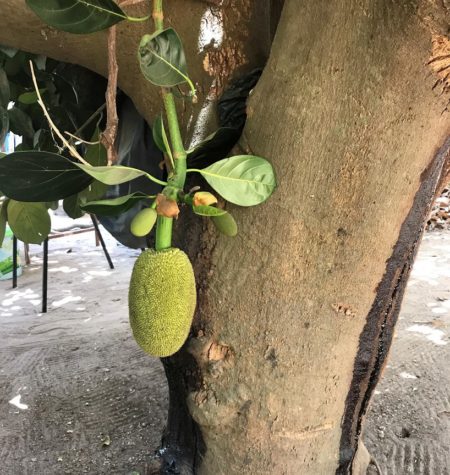
Tree nurseries are encouraged in all regions to address these concerns, and there were sessions devoted to tree identification, when to collect and plant seeds, how to store and prepare seeds for planting, techniques for building soils for seed beds and planting pots, and grafting for accelerated fruit production.
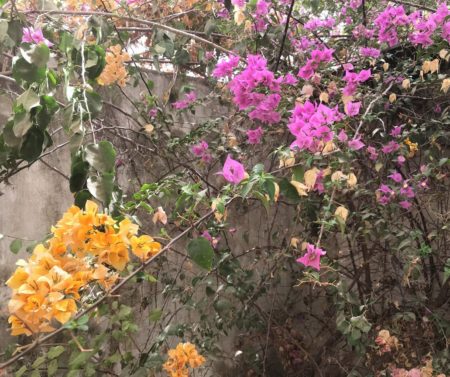
Massembeh is a well-developed agriculture training center with a large variety of trees, an established tree nursery, and vegetable planting beds for volunteers to practice their skills. We concentrated on banana propagation, mango, citrus, cashew planting, taking cuttings, and grafting techniques.
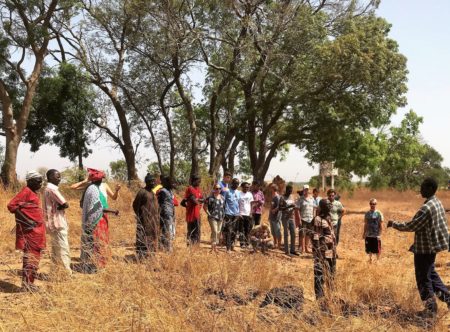
The beginning of the second week of training the counterparts from our permanent sites joined us for two days of hands on training sessions. I was extremely impressed with the Gambians’ enthusiasm and interest in developing more sustainable farming methods. When a PCV leaves after their two years of service, the success of our projects will be in the hands of our counterparts and the local community. We learned several methods for amending planting soils. The recipe for a quick compost method, was new information for me, and can be used anywhere with local materials.
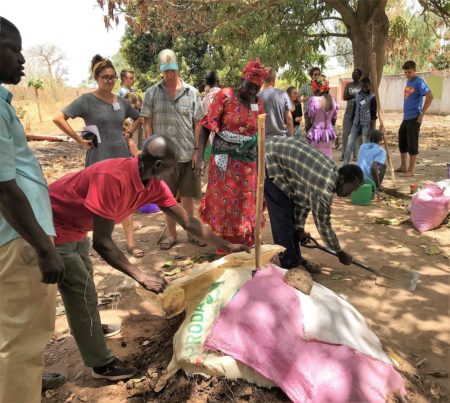
Quick Compost Materials
Husks from coos, sorghum, rice or other dried organic matter. Hay or other soft grasses; finely broken shells from peanuts, rice, seed pods; and bran from rice, coos, millet, sorghum or other cereals. Also animal manure, top soil, vinegar, urea, sugar, and water.
In a shady area:
Make a layer of the brown plant material – about four wheel barrow loads; then a layer of five wheel barrow loads of animal manure; and finally a one wheel barrow layer of top soil. Next make a solution of one liter vinegar, one kilo urea, one kilo sugar together in a container. Well mix the browns, top soil, and manure together before adding the vinegar, urea, sugar solution into it. Make sure the mixture is saturated but not too wet, additional water may be necessary to achieve a moisture content like a sponge that has had the water wrung out.
Mix all ingredients together well, then compact with the back of a shovel. A second similar pile can be made, and then the two piles can be mixed together, to create enough compost for your project. Put a stick in the middle of the pile, all the way down to the ground, to act as a barometer. Cover the pile with plastic or rice bags and wait four to six weeks, occasionally checking the stick barometer, to determine when the compost thoroughly decomposed and ready to use.
Another soil amendment is biochar. Gambians are familiar with making charcoal, because it is what most people cook with, therefore, making biochar is easily explained.
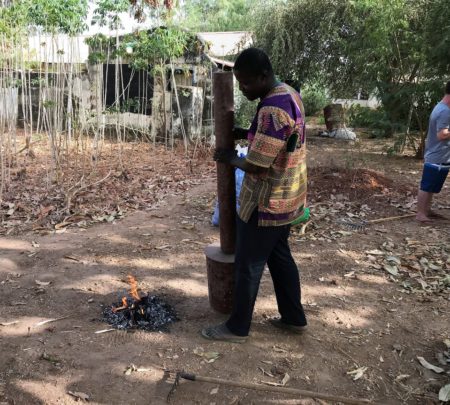
Although, some equipment is involved, the materials to make biochar are readily available. With a biochar stove, some firewood, and rice hulls, biochar can be made in a couple of hours.
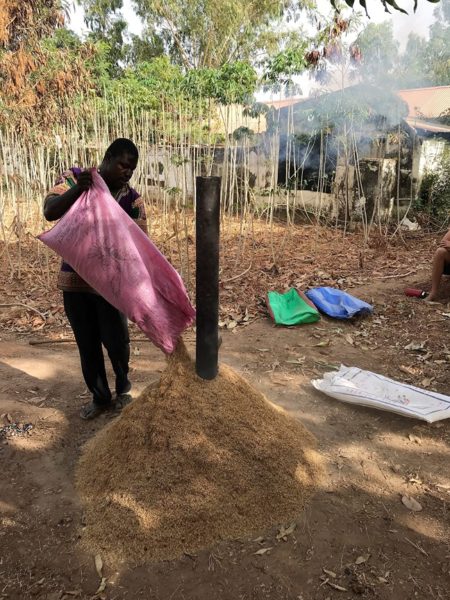
A small fire is made, and when the coals are still hot the biochar stove is placed over the coals. Rice hulls, or another material, are piled round the outside of the lower part of the stove, covering all the holes, so the smoke can only escape through the chimney.
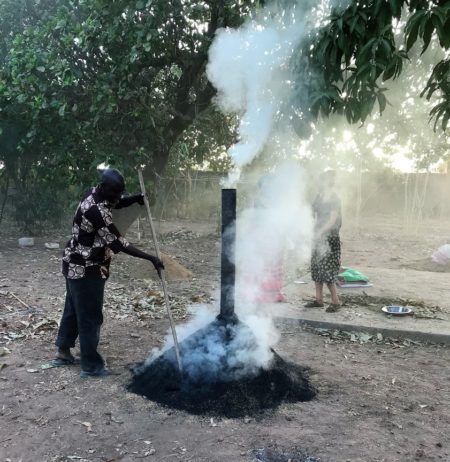
In a couple of hours, the hulls are all burnt, and the resulting product is biochar. After cooling it can be bagged or applied directly to a planting bed.
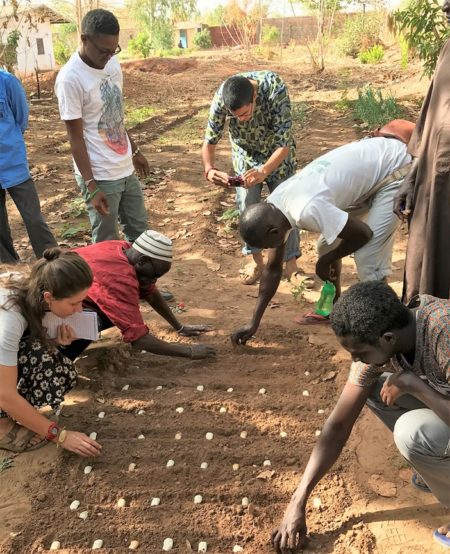
Planting beds are approximately three by twelve feet, filled with amended fertile soil, and a berm to retain water. The soil to be used in the poly pots, should be sifted first to remove any large chunks that would inhibit root development.
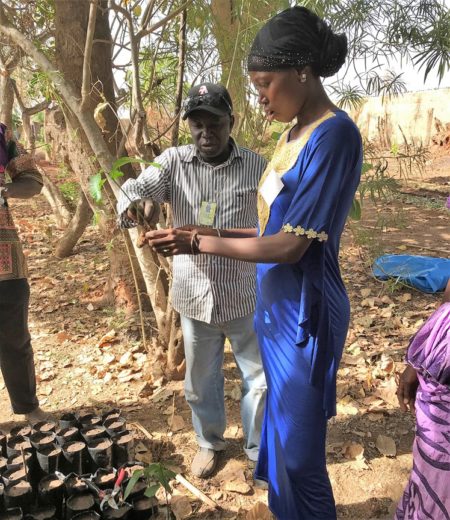
The advantage of starting seeds in a planting bed, and then transplanting into poly pots, would be that the strongest seedlings can be selected. The poly-pots can be expensive for farmers, so starting tree seeds in planting beds first, will insure only the most viable seeds are transplanted into poly-pots.
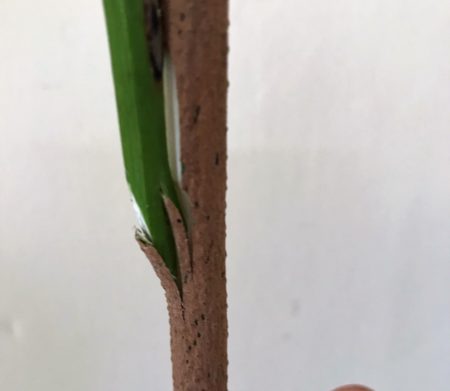
Learning to graft trees was the highlight of the training for me, although I still need lots of practice to be able to control the very sharp knife. Grafting is the joining of two trees from the same species together, to form one tree that will be well suited for the planting situation.
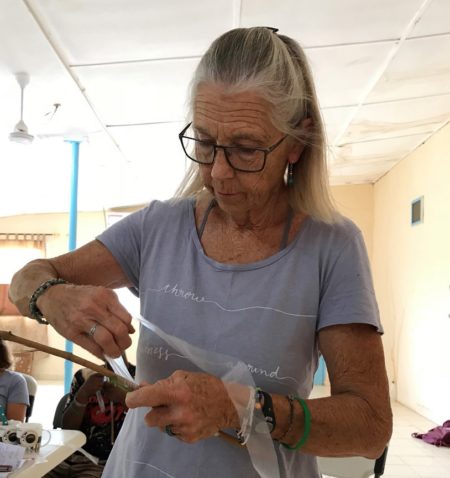
A grafted tree will start producing fruit in half the time of an un-grafted tree. We were taught two grafting techniques – tongue and grove, and side veneer. We practiced grafting mango and citrus trees.
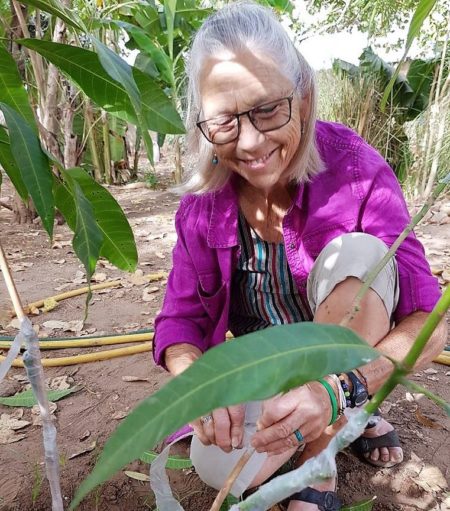
The 5 regions in The Gambia have different climates, soil and water conditions. The Western Region near the Atlantic Ocean is the coolest and has the most consistent temperatures, but the river water is saltier. The Upper River Region in the east can reach 130 degrees during the summer, but the river water is not salty. In my region – the North Bank Region– the salt in the river fluctuates with the seasons, being very fresh during the rainy season and only slightly salty at other times. Also, it will depend upon whether you are using river or well water for your gardens, when making tree selections.
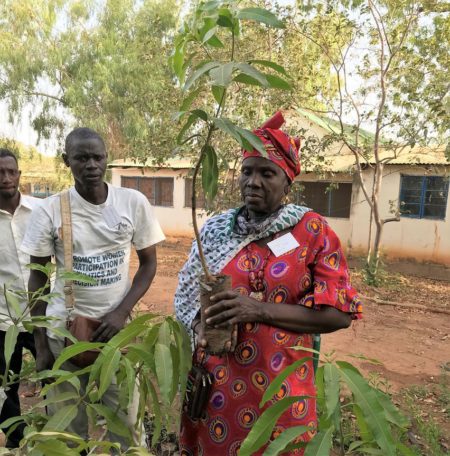
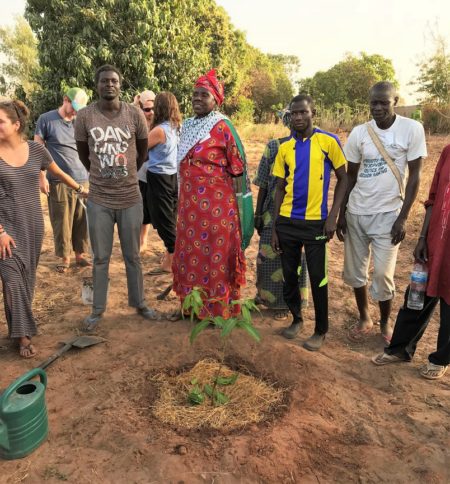
Before the end of the second day our counterparts were here, we planted a grafted mango tree in one of the prepared planting holes.
There are lot of cultural practices a PCV needs to understand to be able to address situations in different parts of the country. There are at least five languages spoken through out the country, and agricultural practices can vary with historical customs. One example is the burning of the soil to remove crop residue. There is a lot of fear about snakes (understandable since there are poisonous snakes here), and removing all vegetation is seen as a control method. Unfortunately, burning the soil is a terrible agriculture practice for many reasons. Burning kills all the good microorganisms, causes soil erosion during the rainy and windy seasons, and starts many destructive brush fires that have contributed to the deforestation problem. Peace Corps has had limited success curbing this practice, but having our counterparts come to trainings can be a teaching opportunity.
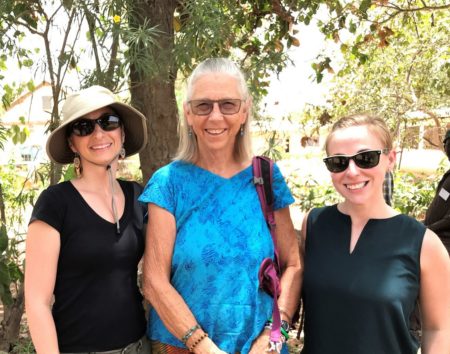
One day we had some special visitors here to observe our PCV training activities. Youliana Sadowski is the Political & Economic Officer with the US Embassy, and Jennifer Casto is the Foreign Affairs Officer with the Office of West African Affairs at the State Department. This was Jennifer’s first visit to The Gambia, and she was particularly interested in eating Gambian food, and the Messembeh cooks served a local dish made with peanut sauce, beef and rice – Durango.
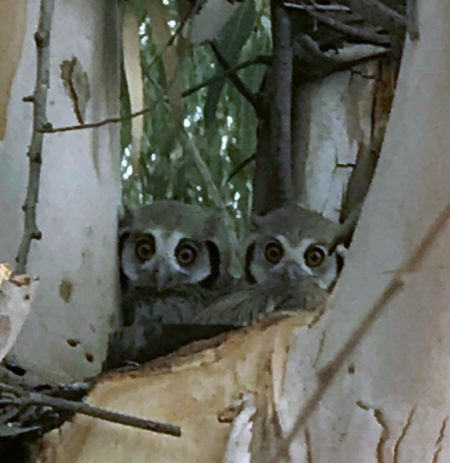
There were many different birds species at Massembeh, and I enjoyed observing them early in the morning, but find them very difficult to photograph. I was thrilled to find these two fledgling owls just sitting in an eucalyptus tree, observing me.
4 thoughts on “Trees”
Cherry trees are in full bloom at the Capital. We have intermittent spring rains. I can hear the sound of lawn mowers.
Thanks for the up date on your IST. What fun to learn to graft. Loved Mangoes when we were in Lesotho. Enjoy them for me- can’t find any as good here.
Your excellent photography is much appreciated. It really helps to SEE what you are talking about. Keep writing!
I am now able to take better photos, thanks to my Portland family for sending me a new iPhone 7s. I was thrilled that it arrived in less than a week, sent insured with UPS, and was waiting for me when I arrived in Kombo for IST. Being able to take quality pictures will make the blog more satisfying, and my Gambian counterpart was delighted to accept my old iPhone with its dead battery. The old iPhone only works when plugged into a power source, and is held together with tape to keep the screen from separating, but he is now able to be on Facebook and follow his sports teams. My trash is now his treasure.
Fascinating and well-written piece. You explain in clear details what you are experiencing and learning. Thanks for all your informative posts. Be well and lots of love!
Comments are closed.